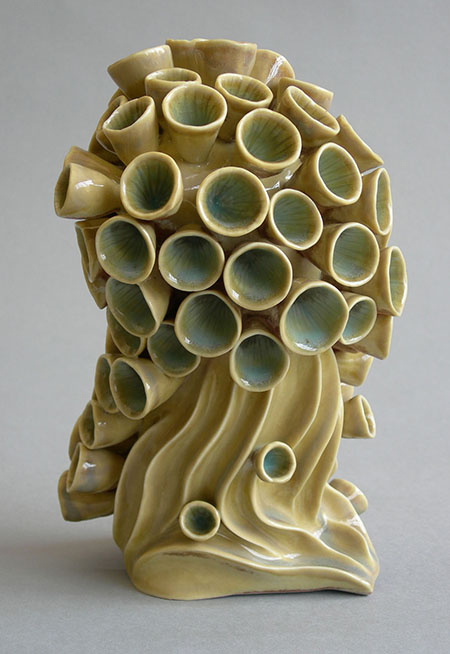La Carte d’Après Nature

Thomas Demand is best known for his photographs of interiors and landscapes assembled entirely from cardboard and paper. These are, in some ways, related to early Surrealist works, such as Giorgio de Chirico’s cityscapes, Giorgio Morandi’s still lifes and René Magritte’s interiors and landscapes. This group show of 20 artists – originally curated by Demand for Monaco’s Villa Paloma in 2010 – did not include any of the artist’s own photographs (as it had done in its first iteration). Instead, exploring ideas of nature and the unnatural, its organizing principle was the gravitational pull he feels from dream-like signifiers. The exhibition’s enigmatic title came from the quirky journal and series of postcards that Magritte occasionally published between 1951 and 1965, and Demand included three of the artist’s paintings as anchors. The photographs, audio, film, video, sculpture, painting and architectural models, as well as its maze-like floor plan (based on a drawing by Martin Boyce), made ‘La Carte d’Après Nature’ a thought-provoking reflection of the range of artistic ideas that Demand considers significant.
The exhibition’s layout, which was punctuated by Boyce’s angular blue-glass windows, choreographed a series of surprises. One of the rewards was finding little-known Magritte paintings in alcove-like rooms: Le grand style (The Great Style, 1951), for example, features a starlit scene of a plant with a globe of the earth growing from (or balanced on) its top instead of a flower; L’Univers Démasqué (The Universe Unmasked, 1932) is a highly artificial, model-like landscape featuring a half-finished house, with the sky turning into a small group of large blocks. These were hung on wallpaper, a work in itself by Demand, which was printed so as to look like theatre curtains.
‘La Carte d’Après Nature’ included a range of works that were similarly interested in the relationships between nature and artifice. In the entrance was a maquette of the William Kissiloff-designed Pulp and Paper Pavilion, from Montreal’s Expo 67, its roof made from pyramidal representations of pine trees. Henrik Hakansson’s recording of birds chirping in Central Park played from a turntable in the first room of the gallery (New York, 2011). Boyce’s No birds, nº 7 (2009), a paper and fabric cut-out, echoed this avian theme, as did Tacita Dean’s short film of magpies in a tree outside her Berlin studio (Pie, 2003). Jan and Joël Martel’s 2011 model of a Cubist tree built by Michel Witold Gierzod, also seen in Robert Mallet-Stevens’ archival photos originally taken in 1925, provided an intriguing historic example of an abstracted, domesticated version of nature.
The exhibition devoted a substantial amount of space to photography and film. Demand has a special affinity for the work of the late Luigi Ghirri, an Italian photographer active in the 1970s and ’80s, who took small, snapshot-like photos of people in artificial settings. For example, a sign shaped like a palm tree stands next to a much smaller potted palm tree near a building in a desolate landscape (Bari, 1982), while a group of tourists walk on a scale model of a mountain in Rimini (1977). Demand also included the work of August Kotzsch, a mid-19th-century photographer, who conveyed a similar sense of strangeness in photos such as Tür zu Kotzschs Schöpfbrunnen (Door of Kotzsch’s Wellhouse, c.1870). Sigmar Polke’s ‘Höhere Wesen befehlen’ (‘Higher Beings Ordain’, 1968) is a group of 14 photographic prints that document a goofy and seemingly significant series of ideas, though it was hard to tell exactly what they represent.
Although inspired by Surrealism, ‘La Carte d’Après Nature’ was much more chaste than the most notorious examples of surrealist art work. There was virtually no sex or violence on display, no hardcore efforts to provoke or shock. Instead there was an encyclopaedic, almost scholarly feeling to the installation, if also agreeably disorientating. Demand’s organization of different rooms according to ecosystems such as mountains, the desert, oceans and forests, and his bringing together of historical and contemporary art work, created something greater than the sum of its parts.
















